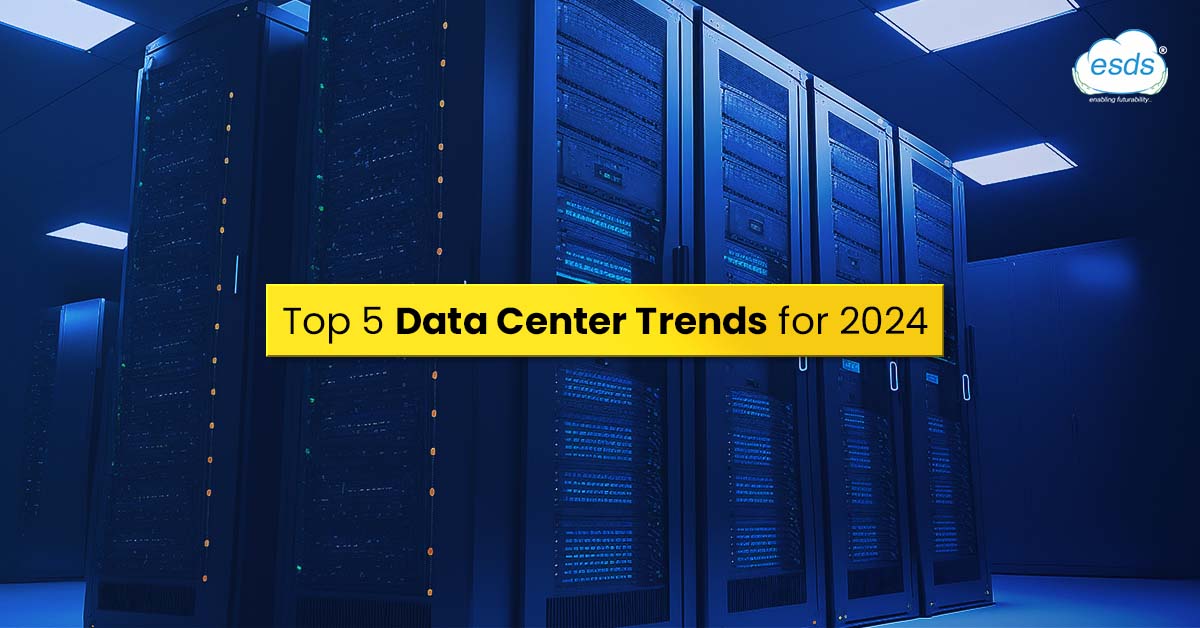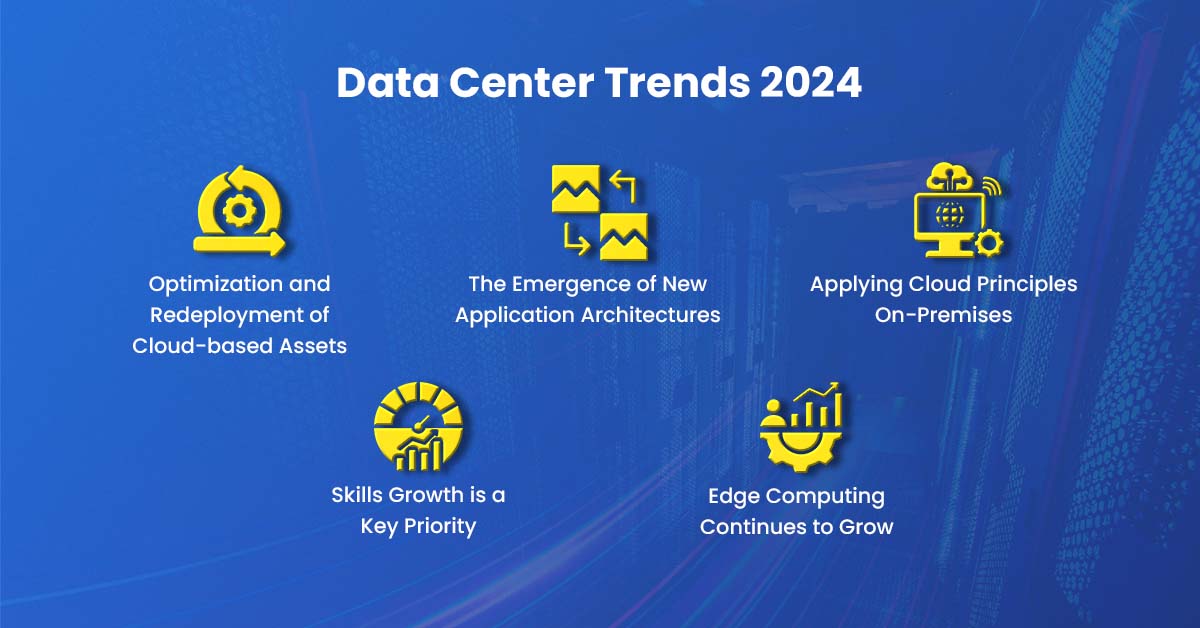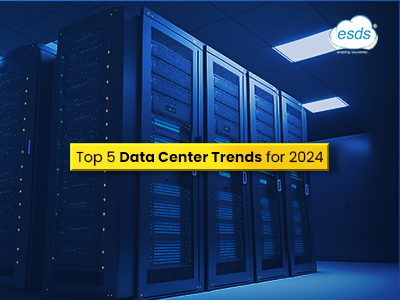Top 5 Data Center Trends for 2024

In the rapidly evolving world of technology, data centers play a crucial role in supporting businesses and organizations. As per GlobeNewswire, the global data center colocation market will expand with a compound annual growth rate of 6.5% from 2021 to 2027. As we approach 2024, it’s essential to stay informed about the latest trends that will shape the data center landscape. By understanding these trends, organizations can make informed decisions and stay ahead of the curve. In this article, we will explore five key data center trends to watch in 2024.
The Top 5 Data Center Trends for 2024
1. Optimization and Redeployment of Cloud-based Assets
As organizations increasingly migrate their applications and data to the cloud, there is a growing need for optimization and restructuring of existing cloud frameworks. Many businesses rushed to the cloud without properly optimizing their applications, leading to performance issues, operational inefficiencies, and rising costs. In 2024, data center teams will take center stage in orchestrating the optimization and redeployment of cloud-based assets.
Colocation data centers are uniquely positioned to help companies regain control over their technology strategy by deploying hybrid environments. These environments move key workloads out of the public cloud and into customized, private servers. By rethinking workload placement across a true hybrid infrastructure, organizations can optimize every asset within its ideal environment, rather than forcing everything into a one-size-fits-all cloud platform.

2. The Emergence of New Application Architectures
The proliferation of cloud-native applications and microservices has created a demand for more advanced and nimble infrastructure solutions. The emergence of new application architectures designed to accommodate the rapidly shifting priorities of modern application development will be amongst the top data center trends 2024.
Serverless computing is gaining traction, offering seamless scalability and operational efficiency. Data center customers can manage resources more intuitively and cost-effectively with serverless computing. Additionally, the use of containers provides consistency in deploying applications across varied environments, enhancing portability and minimizing conflicts. The widespread integration of Kubernetes will further facilitate the orchestration of containerized infrastructure, streamlining complex, distributed environments.
3. Applying Cloud Principles On-Premises
Data center teams are increasingly incorporating cloud principles into their infrastructure management. By utilizing software-defined infrastructure, data centers can achieve unprecedented flexibility and control. Dynamically allocating and managing resources allows organizations to adapt swiftly to changing business needs without hardware limitations.
Automation strategies are also being deployed to accelerate workflows and reduce human error rates. Automation enables data centers to streamline tasks and anticipate a significant reduction in operational downtime. Cloud orchestration strategies further enhance operational efficiency by orchestrating complex processes and workflows, fostering a cohesive environment where various components and systems work in harmony, making it amongst the top data center trends 2024.
4. Skills Growth is a Key Priority
To thrive in a competitive labor market, successful organizations recognize the value of skills growth. The data center industry has long faced a skills shortage that hampers progress and innovation. In 2024, organizations will prioritize skills growth in their strategic roadmaps.
Data center providers must develop robust training programs aligned with emerging trends and technologies to foster continuous learning and adaptation. According to Gartner, 60% of data center infrastructure teams will have greater automation and cloud skills by 2027, up from 30% in 2022. Apprenticeships and training initiatives will be essential for creating a talent pipeline capable of meeting future challenges.
5. Edge Computing Continues to Grow
Edge computing continues to be a significant trend in the data center landscape. By embracing the growing importance of the edge, data centers are building infrastructure capable of supporting surging data traffic. This ensures seamless, efficient, and quick data processing closer to where it’s generated.
Data centers are not only focusing on traditional frameworks but also pioneering the creation of novel architectures tuned to the unique demands of edge computing. Robust, scalable, and agile solutions are being developed to seamlessly integrate with the burgeoning data landscape. Maximizing the potential of an edge-centric world enables data-driven decisions that drive innovation and growth.
Final Words
As we look ahead to 2024, the data center industry is poised for significant growth and innovation. Optimization and redeployment of cloud-based assets, the emergence of new application architectures, applying cloud principles on-premises, prioritizing skills growth, and the continued growth of edge computing are data center trends to watch. By staying informed about these trends, organizations can navigate the evolving data center landscape and make informed decisions that drive success in the digital age.
- Top 5 Data Center Trends for 2024 - October 11, 2023
- Top 15 Cloud Computing Trends 2024 - October 4, 2023
- What is Infrastructure Monitoring and Why Infrastructure Monitoring Tool is Important for Your Business? - September 20, 2023
